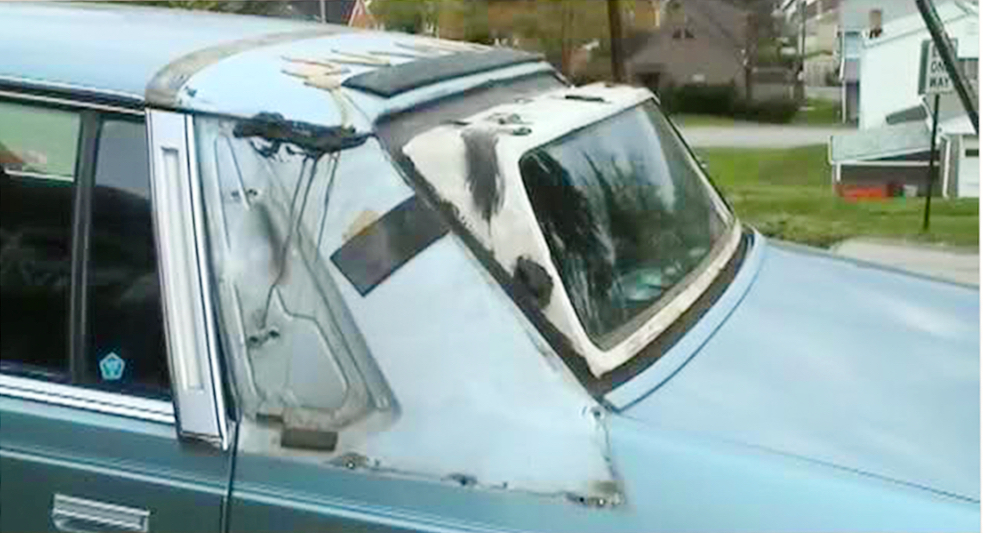
Whether you remember a time when vinyl roof coverings were everywhere on automobiles or not, we have a feeling you’ll find the hidden depths contained within pictures in this article both amazing and cringy at the same time.
In the picture above, what you’re seeing is not a badly-fitting air conditioner unit jammed into a window hole with duct tape around the gaps, it’s a trick used by Ford, and Chrysler, and GM during the 1970s and ’80s to extend the length of a vehicle’s roofline at the back so that a less slanted and more formal-looking vertical drop could occur – without the expense of actually creating different body panel stampings.
I only recently learned about this auto manufacturer trick myself. After researching this topic around the internet and coming up with random tidbits here and there, I became truly amazed at the creativity and effort displayed by Big Three product planning and production engineers during this time – all simply to avoid the trouble of building a handful of their models properly.
Below, I’ll list vehicles that have used the false roof extension trick in chronological order.
1976 CADILLAC SEVILLE
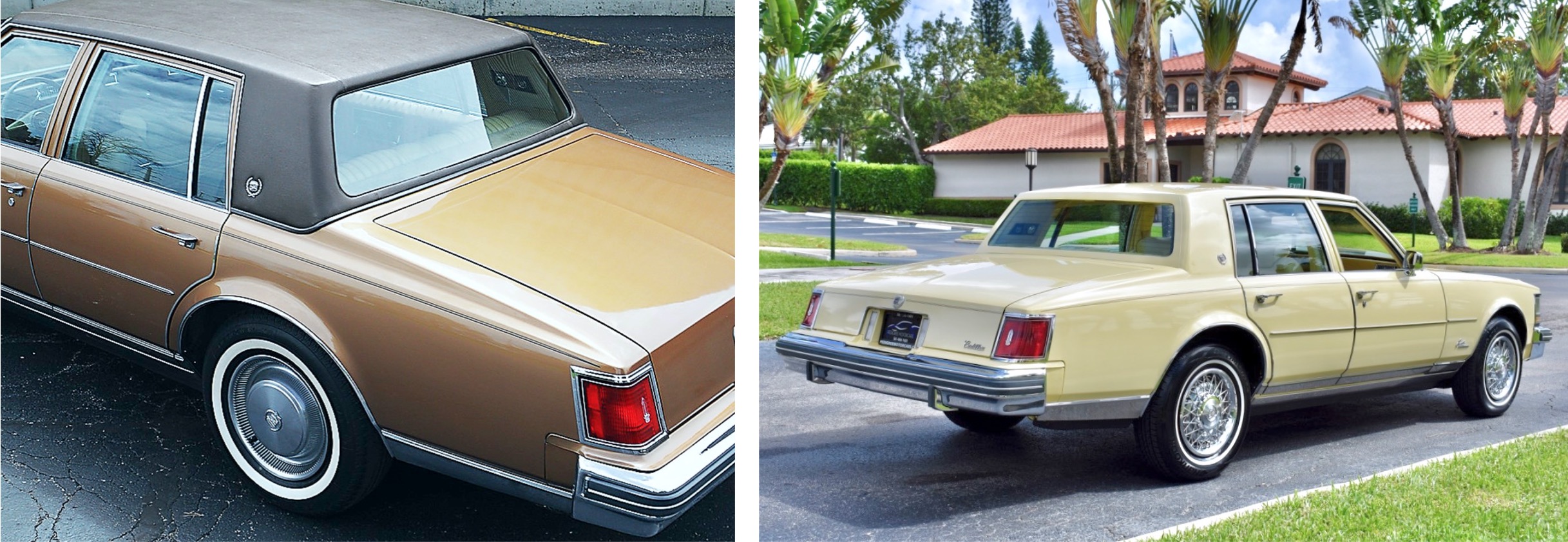
The first-generation Cadillac Seville, introduced as an early 1976 model, required a mandatory vinyl top due during its first model year because it was based on the underpinnings of the 1975-79 “X-body” Chevrolet Nova. Because GM didn’t know if the Seville would be successful, money was saved creating a more formal roofline for it in the beginning. Instead of creating different roof stampings for the squared-off look, an additional rear roof extension around the C-pillar was grafted on to the standard GM X-body roof pressing. Somehow it’s only fitting that the Seville, which started the sheered-edge design craze, also created the fakery of roof extension caps.
The Seville sold in huge numbers from day 1, and demand was very strong for a painted steel “slick top” roof as befitting to a model designed to compete with trim-size European sports sedans from Mercedes and BMW. So due to customer demand, GM actually did the right thing and bared the extra cost of building a new full-roof stamping for the 1977 Seville so that things didn’t have to be hidden under vinyl.
However, that would be the one and only time such a thing occurred…
1979-80 LINCOLN VERSAILLES
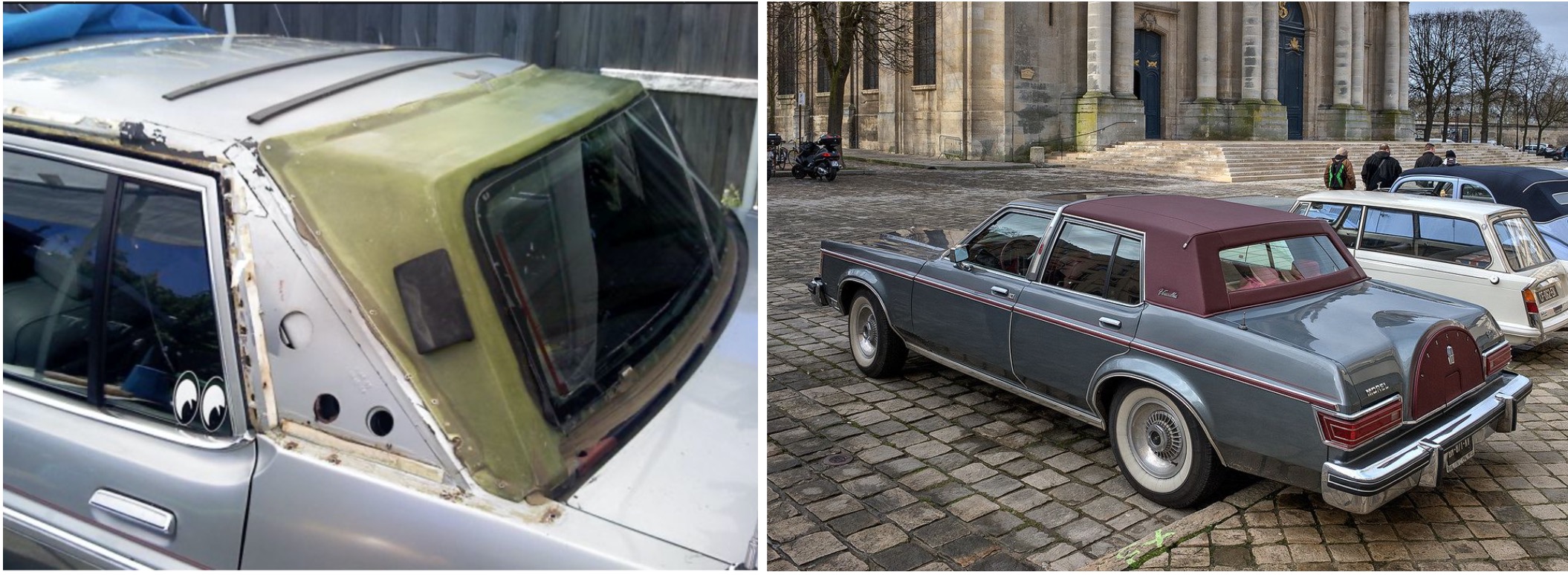
Ford took a page from the 1976 Cadillac book and created a false roof cap for its compact Lincoln Versailles model, conceived hastily after the success of the Seville. The initial 1977-78 production Versailles used the same roofline as the Ford Granada, but to class it up for 1979-80, the American Sunroof company produced a fiberglass cap for Ford. This allowed the rear vertical edge of the roof to match the more upright profile created by the rear doors that were unique to the Lincoln.
1979-91 MERCURY GRAND MARQUIS
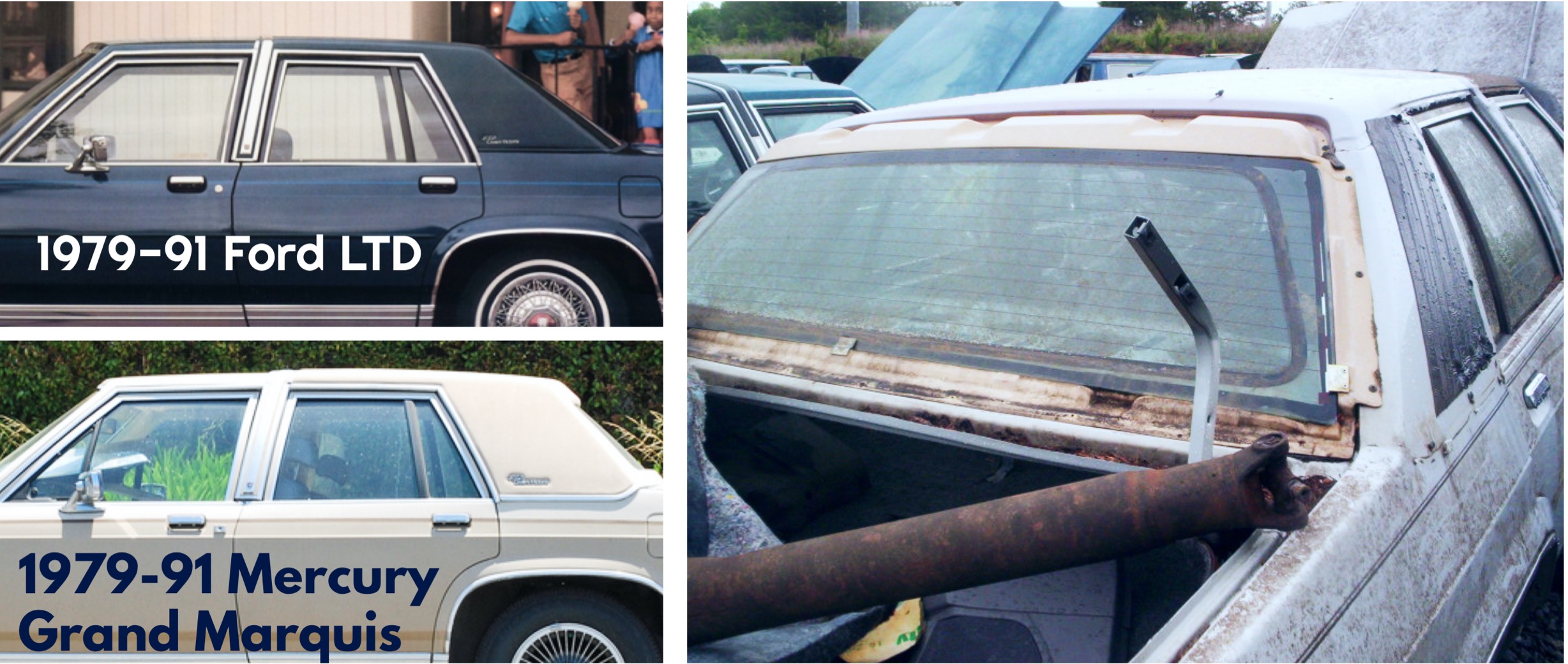
In addition to piecing together an altered roofline for the 1979 Lincoln Versailles, Ford also created one for its new-for-1979 downsized Mercury Marquis. Reports indicate that in the beginning, the initial plan was to weld a separate Grand Marquis sheetmetal cap onto the standard LTD roof on the sedan models, joined at the B pillar.
The United Autoworkers union stood up and would not allow full-time line workers to be exposed to the welding filler, which could prove toxic. Grand Marquis sedans were either turned out and finished by a “supplier” in a nearby building close to the plant, or the assembly line would be shut down so that non-union staff could finish off the cars on the line. It wasn’t long before Ford decide to use a fitted extension piece instead (above right).
1980-89 CHRYSLER FIFTH AVENUE (Rear-Wheel-Drive)
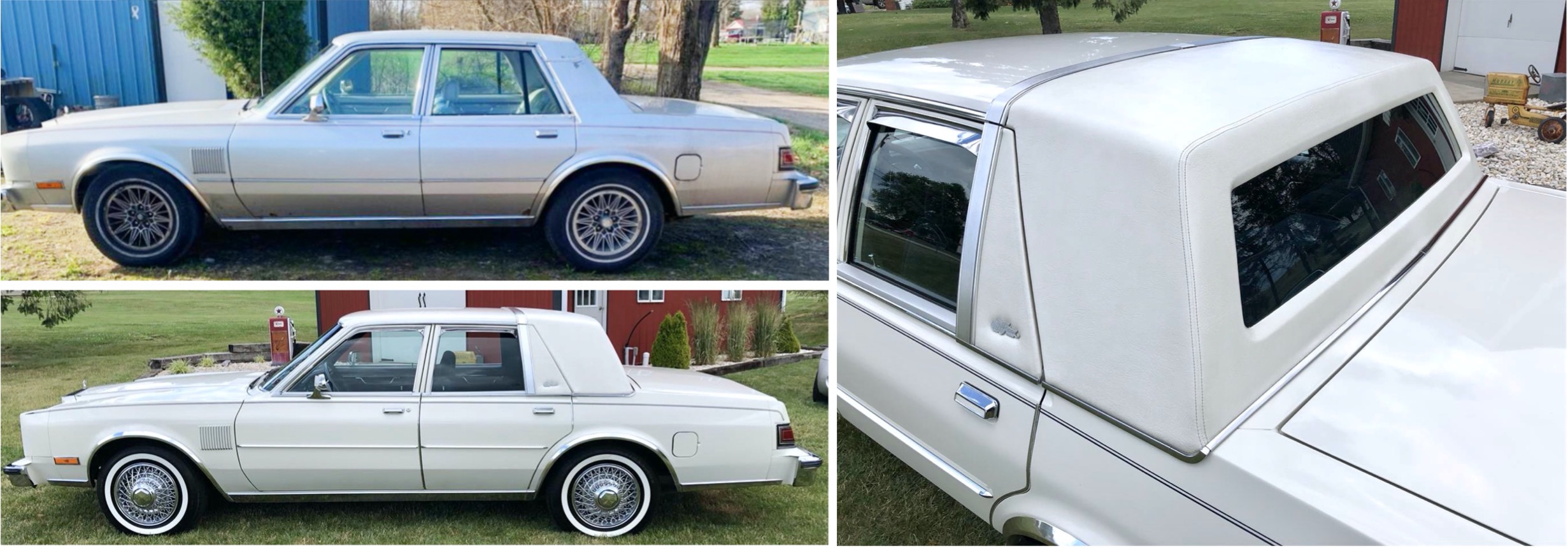
Seeing these low-budget roof techniques applied by Ford and General Motors, Chrysler did their usual “me too” and jumped at the chance to apply bigger globs of frosting onto their top-line vehicles. Inititally created as the “Fifth Avenue” package on the 1980 rear-wheel-drive LeBaron, ASC (American Sunroof Corporation) took the existing Dodge Diplomat sedan, added a fiberglass roof extension, and wrapped it in a squared-off vinyl toupee that also covered a section of the rear doors. Inside, matching panels were applied to the covered window sections, and the interior headliner was dropped down low enough to hide the metal jutting down from where the original window would have been.
When the LeBaron became a separate front-wheel-drive model for 1982, Chrysler continued to sell the rear-wheel-drive one as simply the Fifth Avenue through 1989 – complete with the roof extension and fiberglass toupee standard on all models.
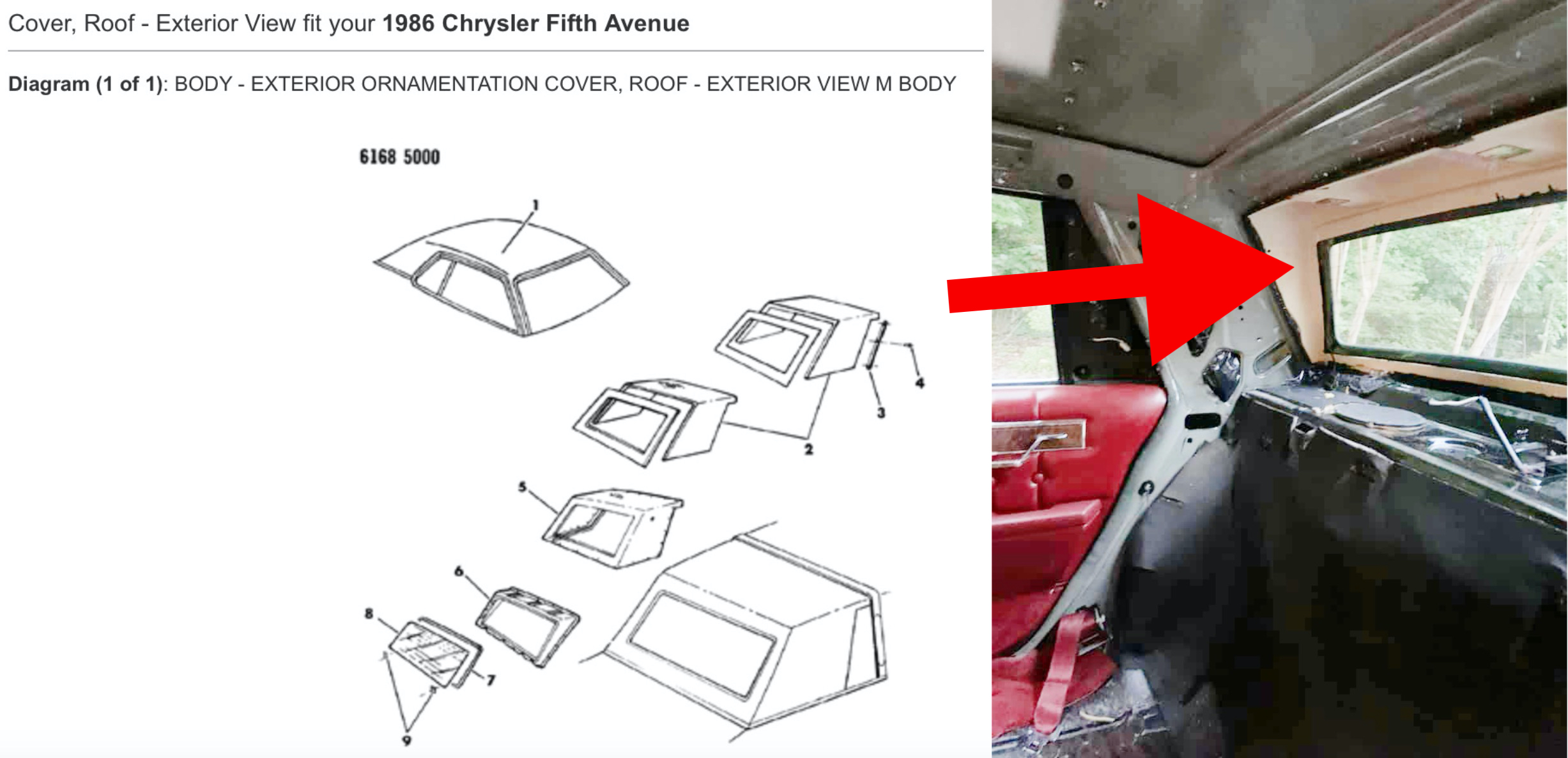
We’ll note that the base Chrysler LeBaron and Dodge Diplomat sedans introduced for the 1980 model year were thinly re-skinned versions of the 1976-80 Dodge Aspen / Plymouth Volare sedans – using the same unchanged front and rear doors. So even though the Fifth Avenue was marketed as a “full-size luxury car”, it had the identical wheelbase and basic interior dimensions as the Aspen and Volare sedans originally classified as “compact” cars by the EPA based on interior volume.
1983-88 CHRYSLER NEW YORKER (Front-Wheel-Drive)
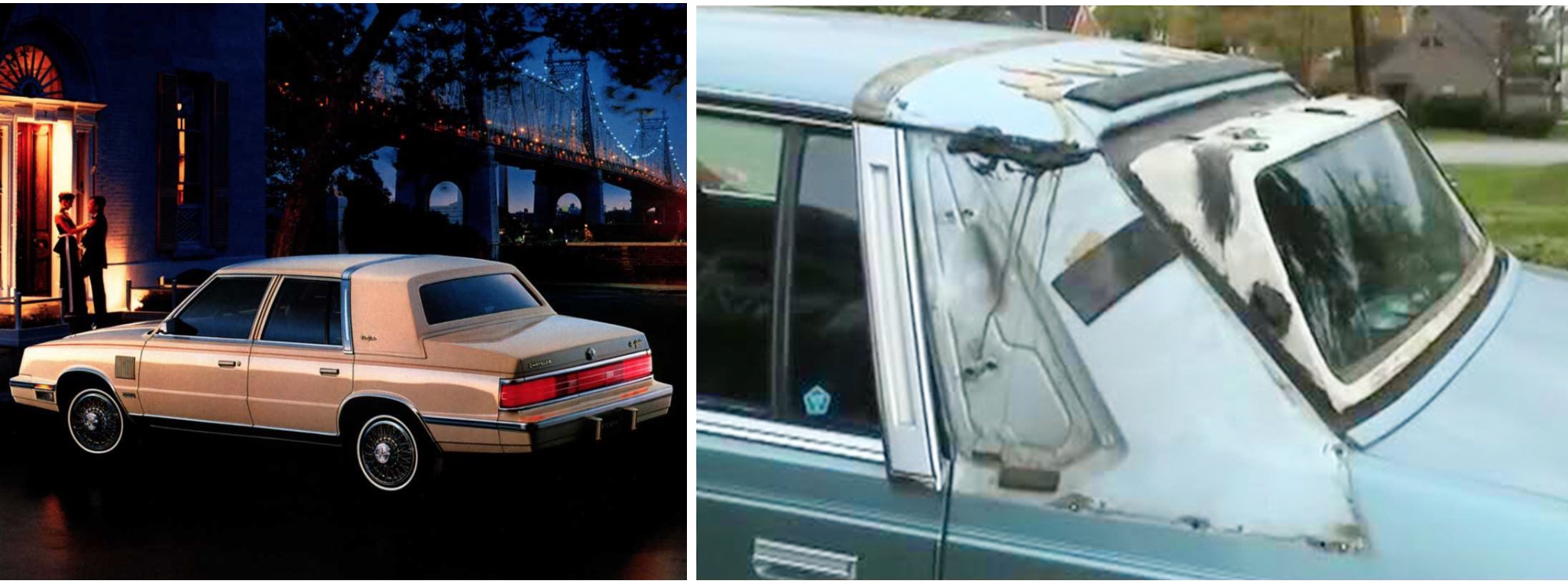
Chrysler, elated with the acceptance of the Fifth Avenue’s roof treatment in the marketplace, couldn’t wait to start slapping fiberglass caps on smaller models it was attempting to position upmarket – specifically the front-wheel-drive 1983-88 New Yorker. The New Yorker used the same body stampings as the lower-priced Chrysler E-Class, Dodge 600, and Plymouth Caravelle – which themselves were essentially gussied up Dodge Aries Ks with a longer wheelbase.
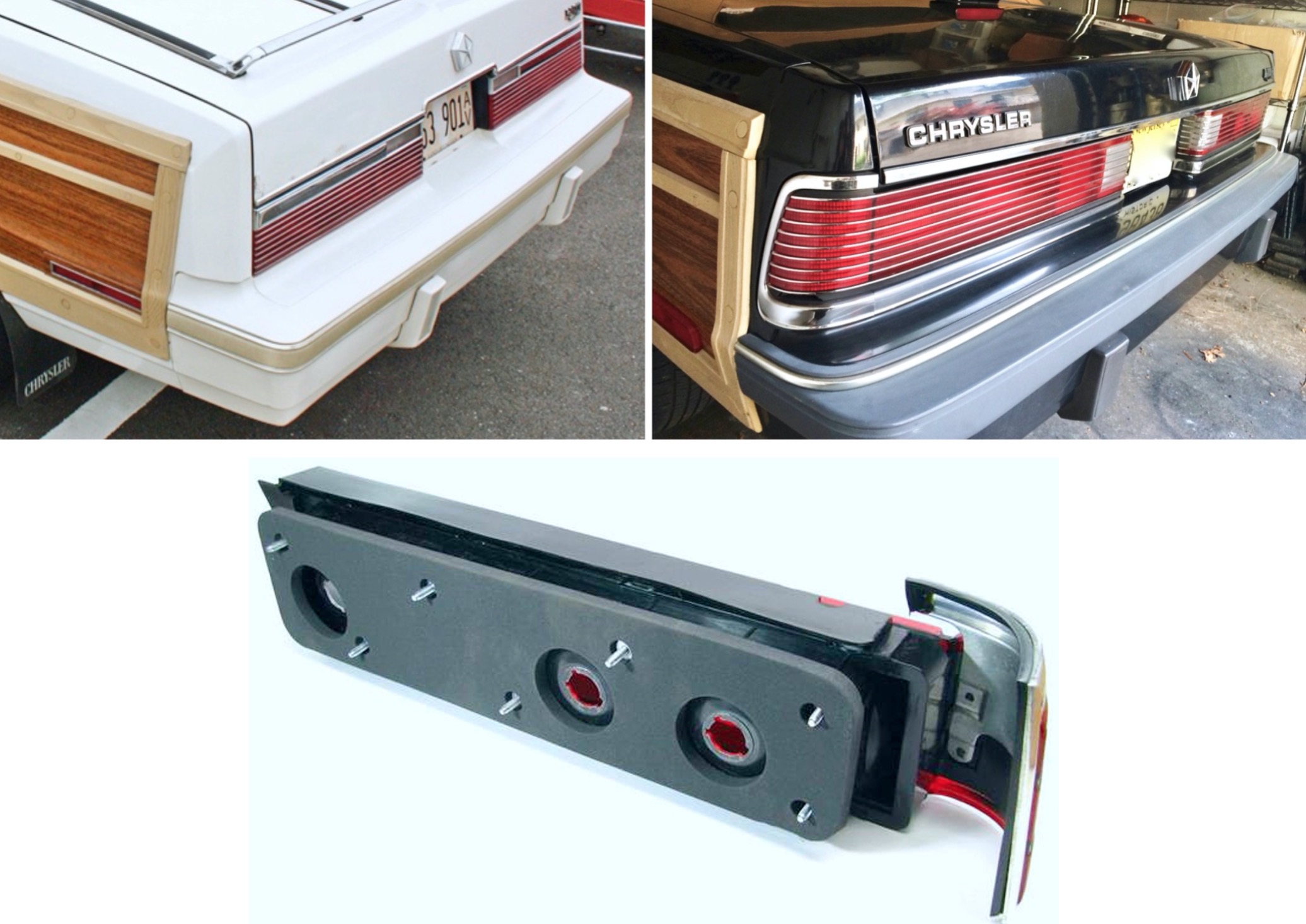
Speaking of 1980s Chrysler, it’s also worth noting that they took an equally chintzy shortcut when it came to updating the look of all front-wheel-drive model tail lights mid-decade. Once again, the R&D department was too cheap to actually re-design sheet metal to accommodate new larger, wraparound lights, so they just shoved ’em in the existing smaller holes and made the overlapping, wrap-around bits hollow so that they covered the exterior sheet metal of the car. The corner piece that wraps around doesn’t function, because you’ll notice the placement and functionality of the side marker light lower down on the rear fender didn’t change.
Extra chrome trim pieces were craftily used to hide gaps created. This trickery did improve the look of the rear, and it’s likely most owners never realized or cared that the rear corner of their tail lights did nothing.
1987-90 CHEVROLET CAPRICE CLASSIC BROUGHAM LS
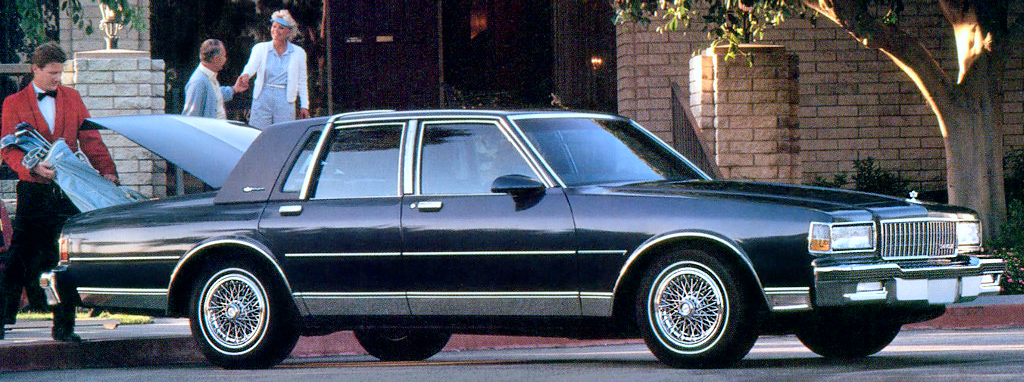
Ever since the Bel Air in the late 1950s, Chevrolet had a way of introducing fancier versions of a single full-size car design with a new model name positioned above existing ones. As those existing models gradually dropped downward in price and prestige, the ones that found themselves at the bottom were eventually axed sooner or later. For example, the Biscayne was first introduced above the Bel Air, then came the Impala, then finally the Caprice. All of these nameplates coexisted until the Bel Air and Biscayne (which had fallen to taxicab-level status) were dropped after 1975. The Impala soldered on for 10 more years, not as the sporty version it was originally created to be, but as a base version of the Caprice.
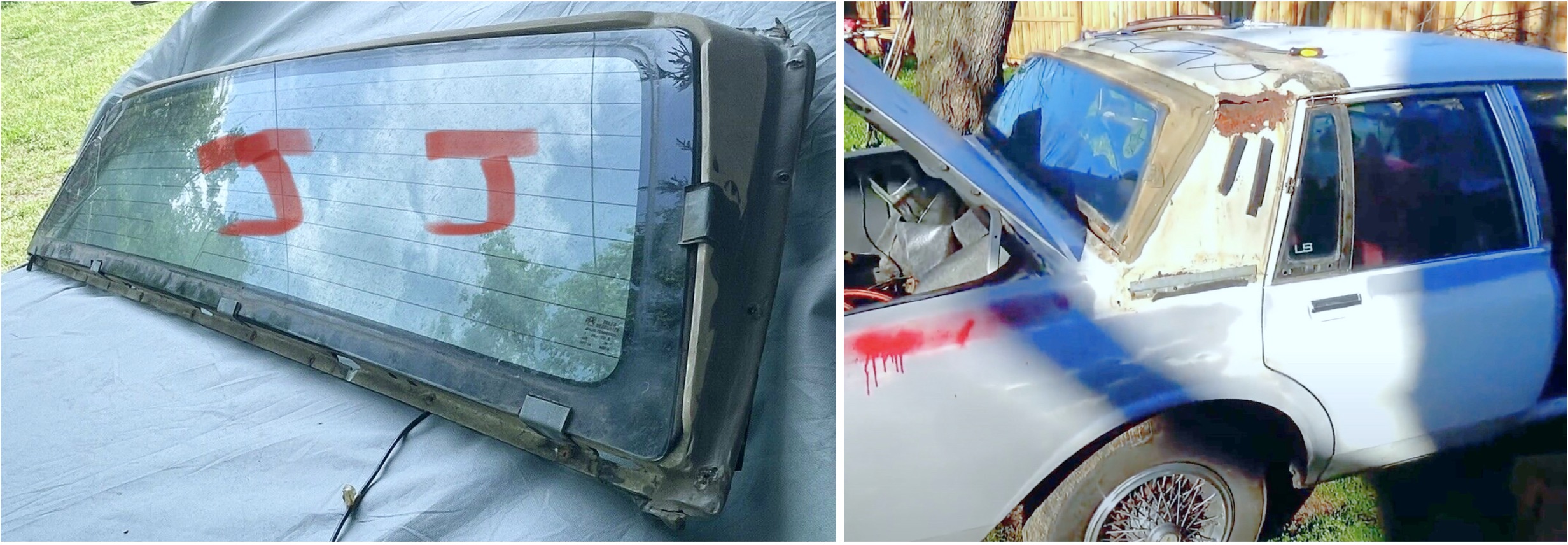
When the Impala was cut after 1985, it left only one full-size Chevy model for 1986 – the Caprice. If you wanted an el-cheapo base vehicle, you got a simple “Caprice”. For those who craved more padded luxury, there was the 1986 Caprice Classic Brougham at the top of the pecking order.
But still, that didn’t seem like enough to Marketing decision-makers who yearned for something new and even fluffier. Needless to say, the Caprice Classic Brougham LS was created to take top dog status for 1987. Inspired by Chrysler Fifth Avenue padded vinyl inserts on the rear doors, the LS was given similar ones and a more formal roofline via the tried-and-true fiberglass overlay method.
And, like most American cars of this era, a mandatory padded vinyl roof washed away evidence of all sins. Surely I’ve missed other makes and models that received this same treatment, so don’t hesitate to let me know…

































